*NURSING > STUDY GUIDE > Study Guide for Final Exam for Advanced Nursing Practice II 100% CORRECT ANSWERS AID GRADE ‘A’ (All)
Study Guide for Final Exam for Advanced Nursing Practice II 100% CORRECT ANSWERS AID GRADE ‘A’
Document Content and Description Below
1. Know the causes of an abdominal aortic aneurysm. The proposed causes of AAA include atherosclerosis, inflammation, mycotic infection, inheritable connective tissue disorders (Marfan syndrome, ty... pe IV Ehlers-Danlos syndrome), and trauma. Traditionally, atherosclerosis has been considered the most common cause of AAA. However, aneurysm formation is associated with atherosclerosis in only 25% of cases. 2. Why is CT imaging limited in women? Single-photon emission CT imaging is technically limited in women because breast tissue and smaller coronary artery size. 3. What is self-management support? Self-management support is a crucial component of the CCM and effectively implemented by use of a population approach. The goal of self-management support is to engage patients in their own care and to empower them to reach their full potential as self-advocates and partners in care. Before patients can begin self-management, they must have access to information that is appropriate for how they learn and who they are—educationally, cognitively, emotionally, culturally, and experientially. 4. Which Medicare part covers inpatient hospital services? Part A – paid through federal payroll taxes – Covers inpatient hospital services as well as some post-hospital nursing care & home health care 5. Understand risk factors for abdominal aortic aneurysm. Risk factors for AAA include atherosclerotic vascular disease, white race, male gender, advanced age, hypertension, smoking, chronic obstructive pulmonary disease (COPD), history of hernias, family history of AAA, and presence of other aneurysms.4,5 Despite extensive investigation, the link between COPD and AAA remains elusive. Evidence suggests that the high prevalence of AAA in patients with COPD may be related to medications (oral steroids) and coexisting diseases rather than to a common pathway of pathogenesis involving plasma elastase or α1-antitrypsin 6. Study atrial fibrillation and at what age is it more common. Atrial fibrillation is the most common sustained cardiac rhythm disturbance, more common in men and increasing in prevalence with age. It is estimated that 2.3 million Americans have atrial fibrillation, which more commonly occurs after the age of 60years. 7. Where could you find supporting data for guidelines for prevention of future heart disease? The recommendation for asymptomatic women with diabetes, peripheral vascular disease, and possible kidney disease is for secondary prevention strategies to prevent future cardiac events. 8. Can ischemic changes on an ECG during or after an ETT correlate to the effected artery or arteries? It is helpful to correlate the ischemic leads on exercise electrocardiography to the underlying coronary anatomy to roughly identify the culprit artery or arteries. 9. What is the goal of self-management? Self-management support is a crucial component of the CCM and effectively implemented by use of a population approach. The goal of self-management support is to engage patients in their own care and to empower them to reach their full potential as self-advocates and partners in care. For many patients and providers alike, this patient-centered practice is a new method. In the acute care model, clinicians prescribe and patients comply. Self- management support in the CCM requires different assumptions, processes, and skills. 10. Know the symptoms of an abdominal aortic aneurysm. Thromboembolic phenomena may herald the presence of an AAA. Microembolic infarcts in the lower extremity of a patient with easily palpable pedal pulses may suggest either abdominal or popliteal aneurysm. Embolization of mural thrombus from an abdominal aneurysm may be seen with acute limb ischemia caused by femoral or popliteal occlusion. The classic diagnostic triad of ruptured AAA is hypotension (42%), pulsatile abdominal mass (91%), and abdominal pain (58%) or back pain (70%). The triad is encountered in only 50% of patients with a ruptured AAA. Ruptured AAAs should be suspected in any patient who comes in with complaints of hypotension and atypical abdominal or back pain symptoms. In a patient with a history of aneurysm or pulsatile mass, abdominal pain must be considered to represent a rapidly expanding or ruptured aneurysm and must be treated accordingly. In the community setting, the death rate from ruptured AAAs is almost 80%. 11. Know the difference between the principles of fidelity, veracity, self-reflection, and finance. Justice, fidelity, and veracity are ethical principles that health care providers use to guide their professional interactions. When health care providers treat all with respect and address their patient's health care needs, they are following the principle of justice. Adherence to the principle offidelity mandates that health care providers honor their commitments; adherence to veracity compels health care providers to tell the truth and not to be deceptive. When health care providers treat all with respect and address their patient's health care needs, they are following the principle of justice. Whereas we bring considerable thought and reflection to the dilemmas we encounter, the initial reaction of outrage or distress can be quite protective for patients. These emotions highlight the urgency and significance of issues identified in clinical practice and frame approaches to bring best thinking to these dilemmas. Reflective practice is considered to be a means to enhance the identification of clinical concerns and to initiate strategies for assessing and planning care when ethical issues and dilemmas present themselves.8 Reflective opportunities in daily practice allow the practitioner to consider thoughts, feelings, and actions in compelling or difficult cases and then to use team meetings or practice rounds to identify best practice in these cases. 12. Understand the coronary flow related to CAD. CAD exists when coronary arteries are narrowed by atherosclerotic plaque formation, plaque rupture, or spasm. This narrowing impedes coronary blood flow, resulting in hypoperfusion of the myocardium. The hypoperfusion produces first diastolic, and then systolic dysfunction, with characteristic signs and symptoms, including chest pain. Typical ECG changes of ischemia result, although the ST-segment and T-wave changes that are central to demonstration of ischemia occur relatively late in the ischemic cascade. The coronary circulation allows maximum oxygen extraction from the blood when the body is at rest. The healthy coronary circulation can increase flow approximately five times above the baseline level. The fundamental pathophysiologic change in CAD is a limitation of the ability of the coronary arterial circulation to vasodilate appropriately. As a result, the ability to increase coronary blood flow in the face of increased myocardial oxygen demand is limited, leading to an imbalance between oxygen supply and demand and resulting in myocardial ischemia. 13. What pathogen accounts for the majority of cases of pyelonephritis? Pyelonephritis refers to bacterial infection of the upper urinary tract, which includes the kidneys and the ureters, and usually results from ascending infection. A sustained bladder infection and reflux increase the risk for ascending infection. High fever, chills, flank pain, costovertebral angle tenderness, nausea, and vomiting in the presence of urinary symptoms are suggestive ofpyelonephritis. However, kidney infection may also be manifested with only bladder irritation and the absence of any of the classic signs or symptoms. The presence of white blood cell (WBC) casts on microscopy is considered pathognomonic for pyelonephritis. E. coli accounts for more than 80% of acute uncomplicated cases of pyelonephritis.4 Pyelonephritis in male patients suggests an underlying urologic structural abnormality. Renal calculi and embolic infarction can also cause flank pain and hematuria, mimicking pyelonephritis. However, unlike the case with UTIs, urine cultures are sterile and no bacteria are seen on Gram stain.14. [Show More]
Last updated: 1 year ago
Preview 1 out of 18 pages
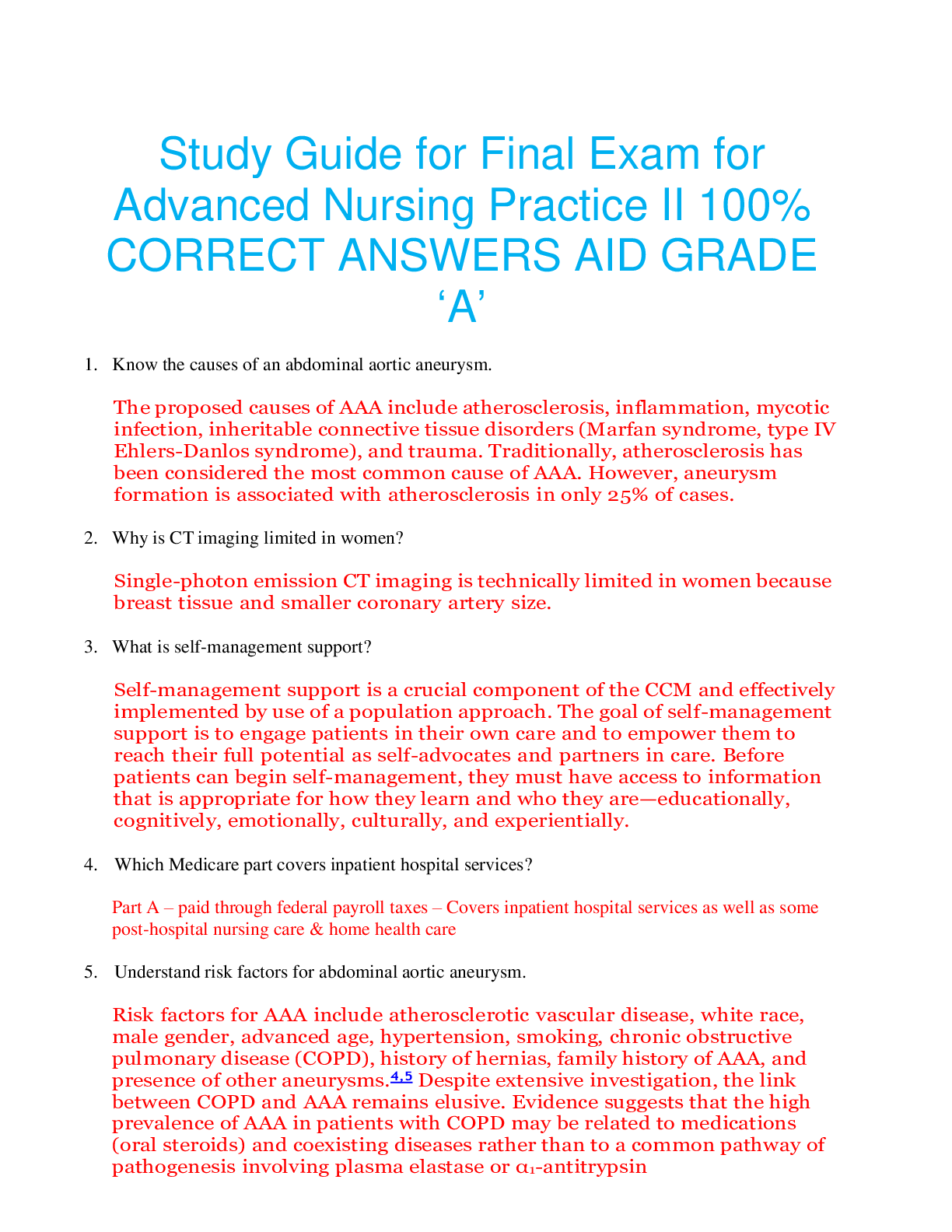
Buy this document to get the full access instantly
Instant Download Access after purchase
Add to cartInstant download
We Accept:

Reviews( 0 )
$13.00
Document information
Connected school, study & course
About the document
Uploaded On
Jun 22, 2021
Number of pages
18
Written in
Additional information
This document has been written for:
Uploaded
Jun 22, 2021
Downloads
0
Views
24

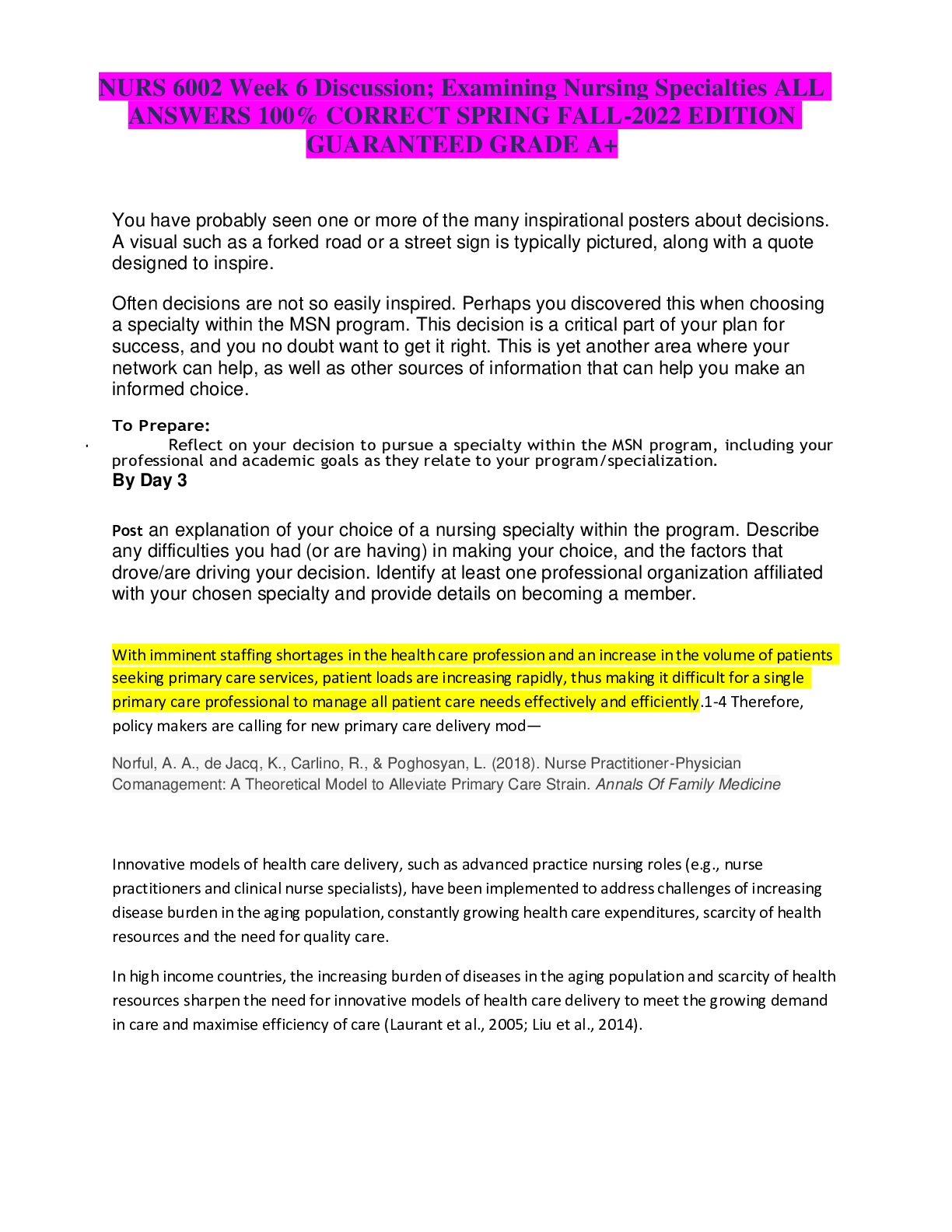
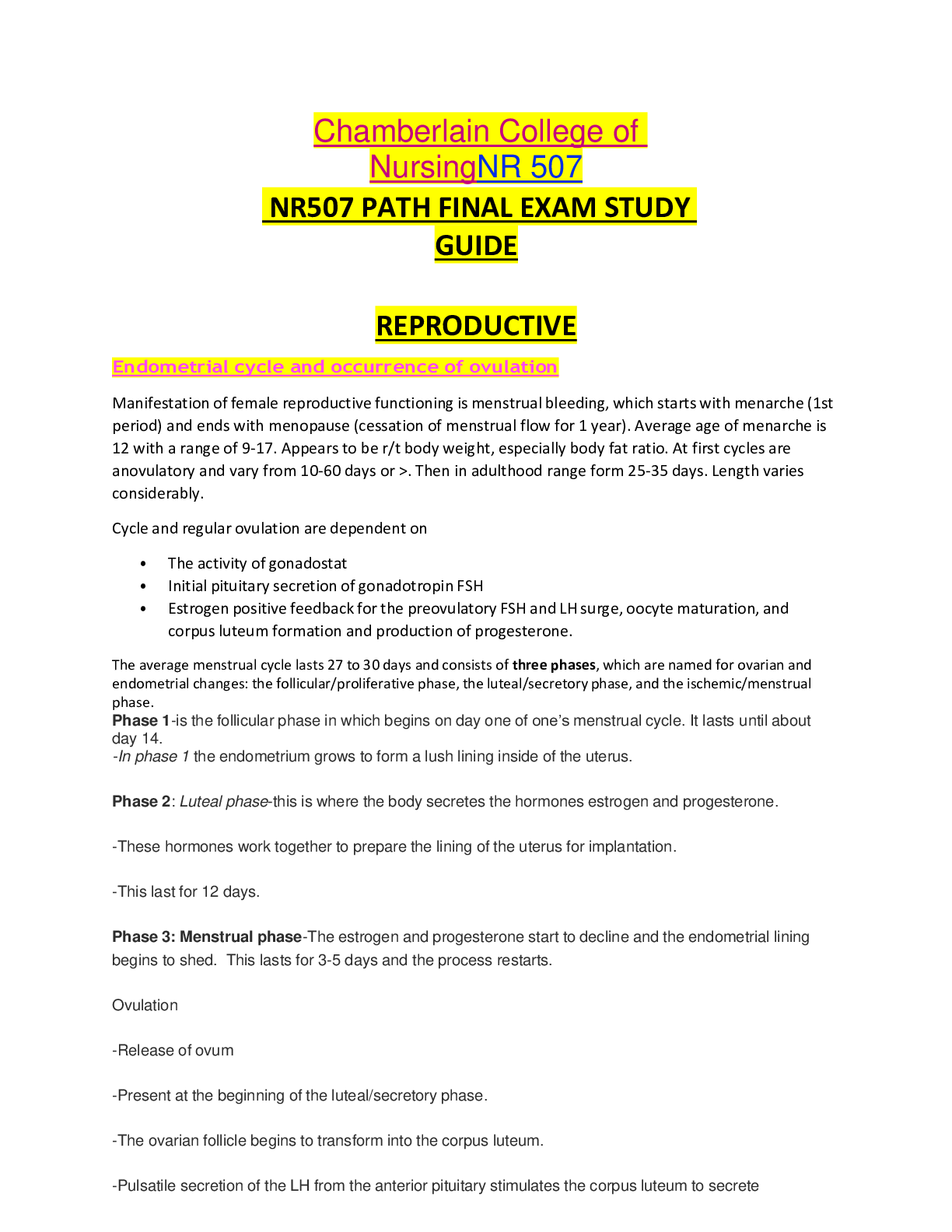
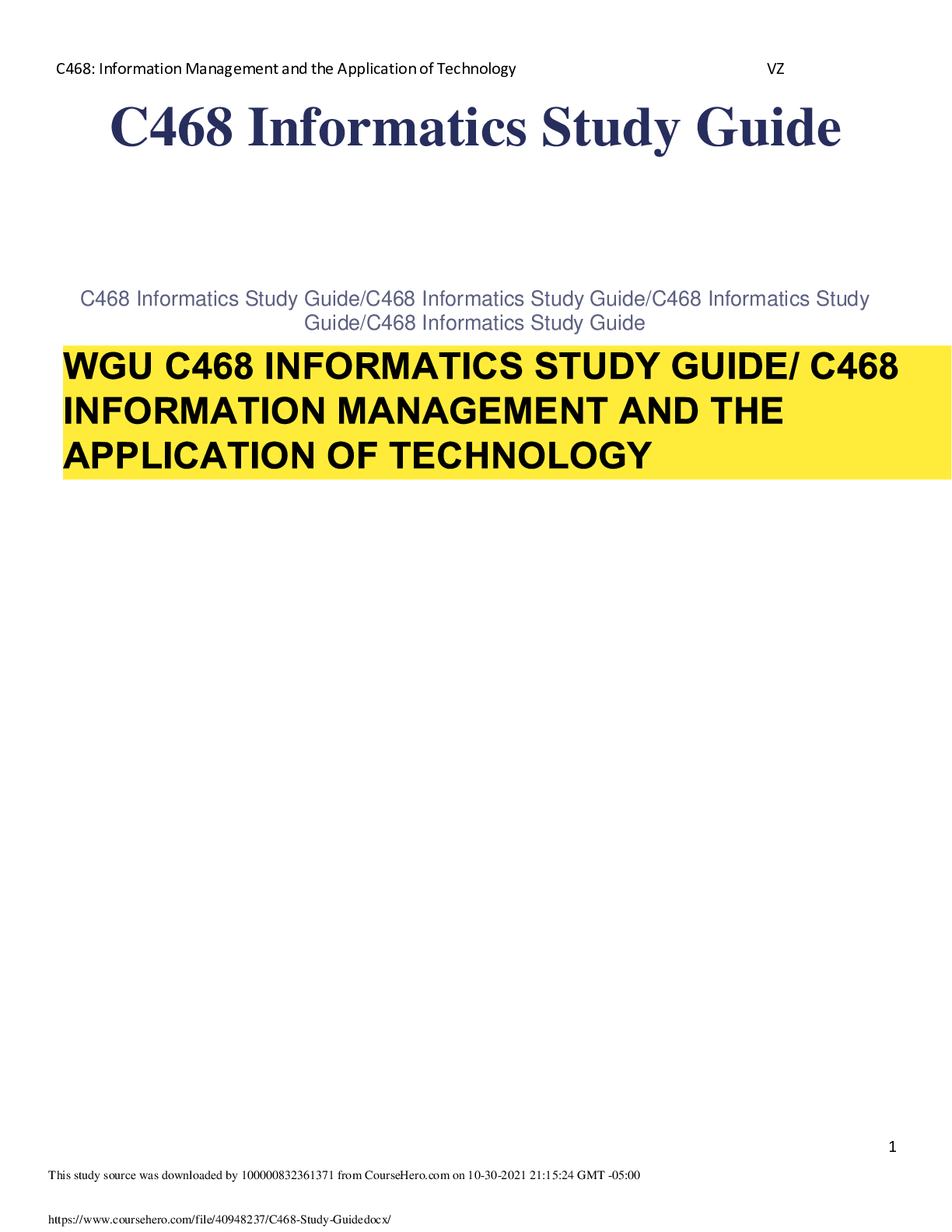

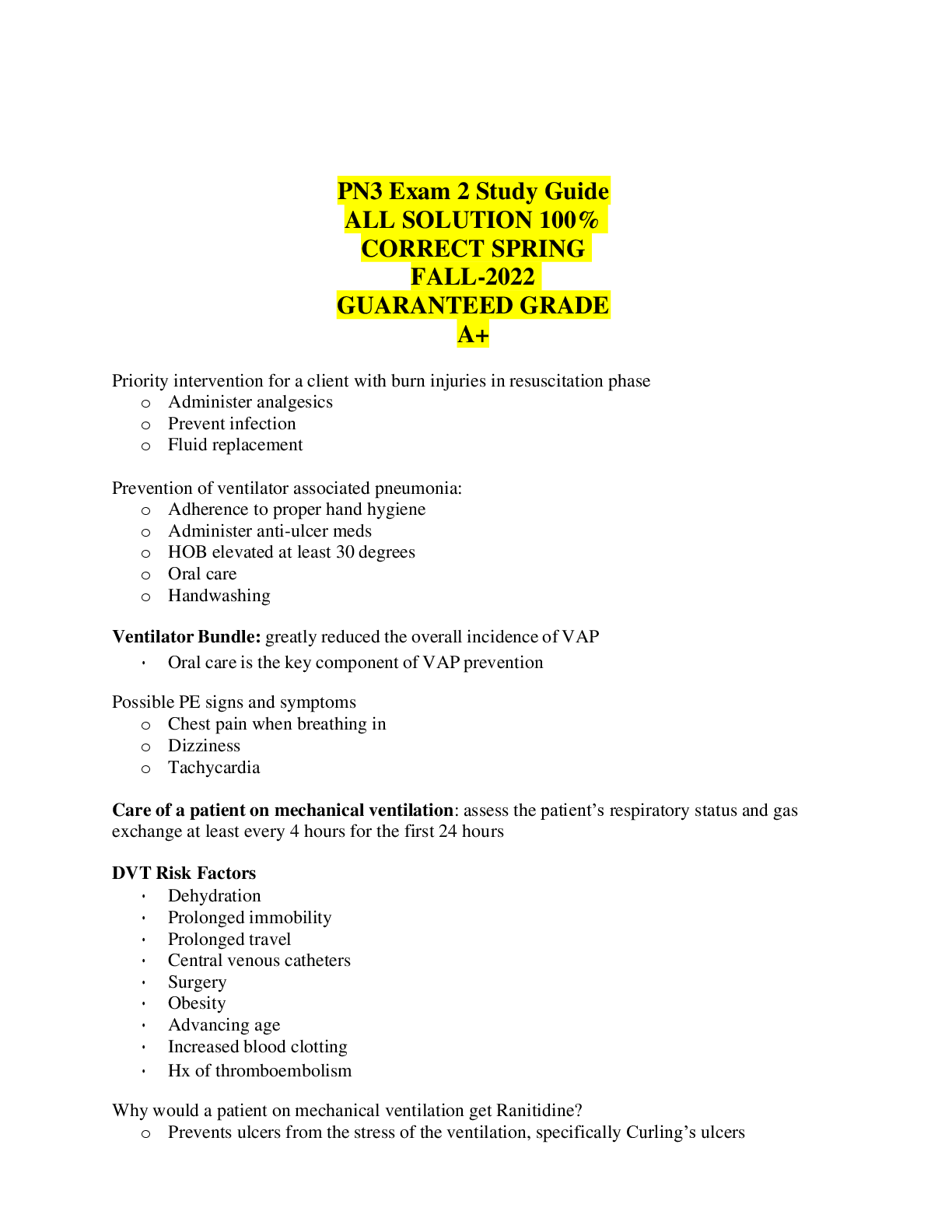

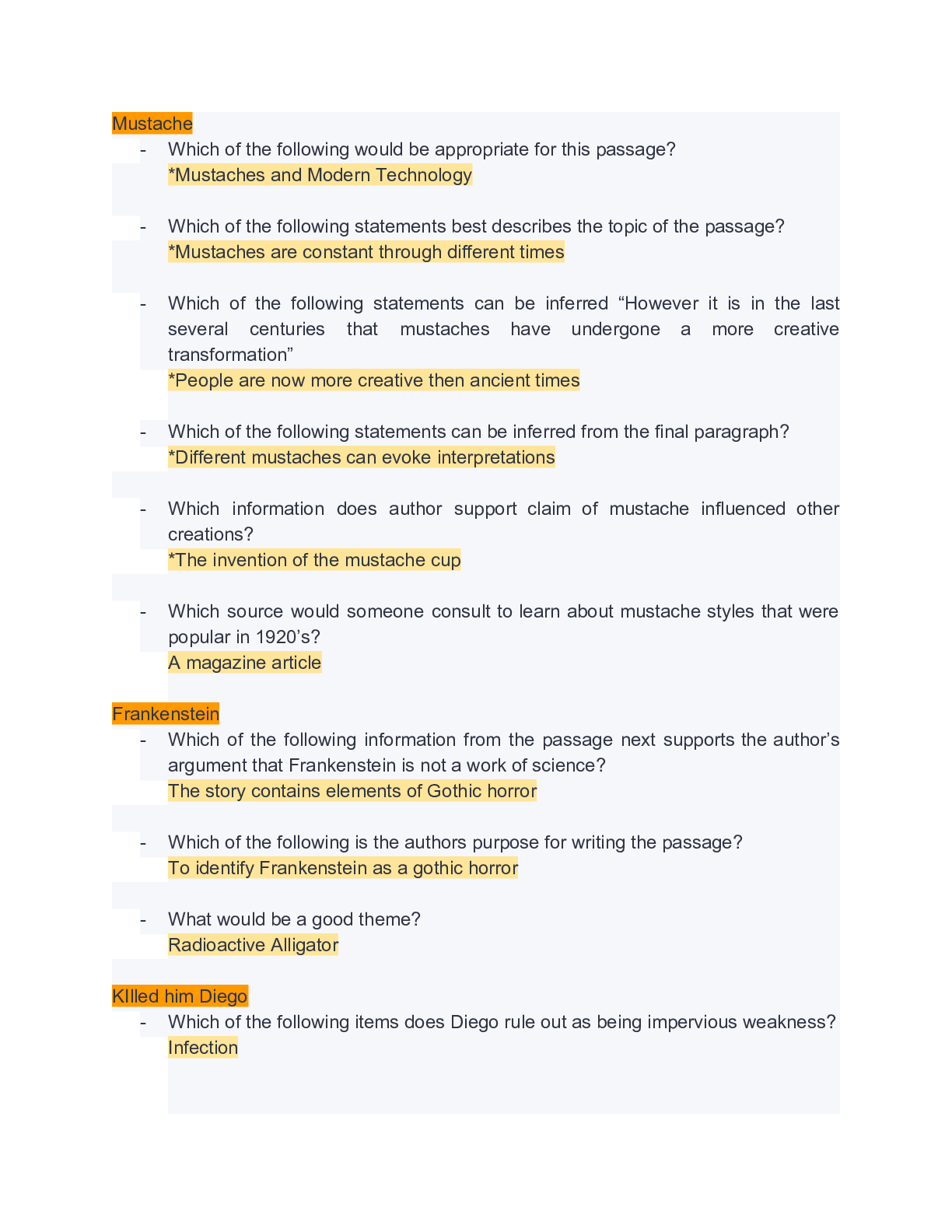

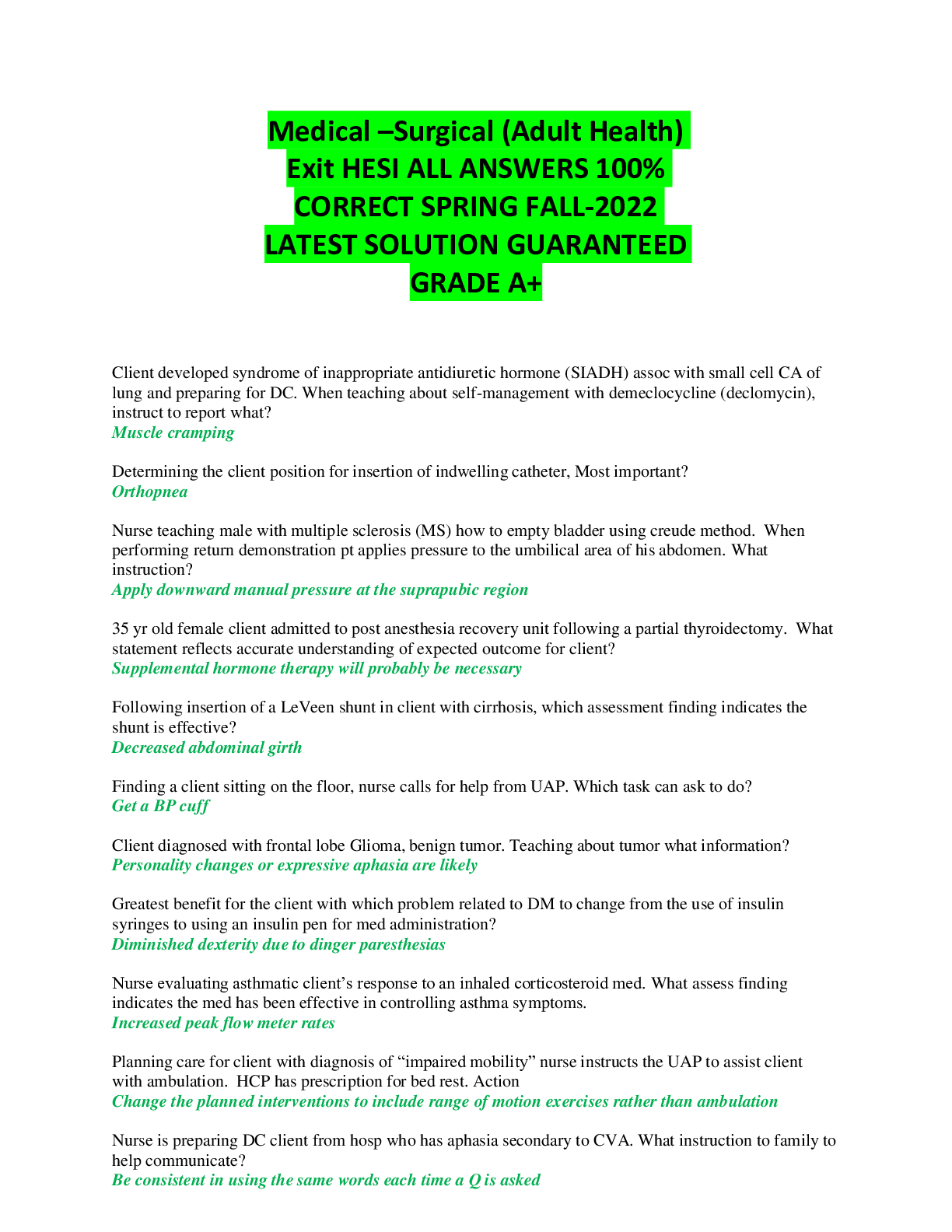
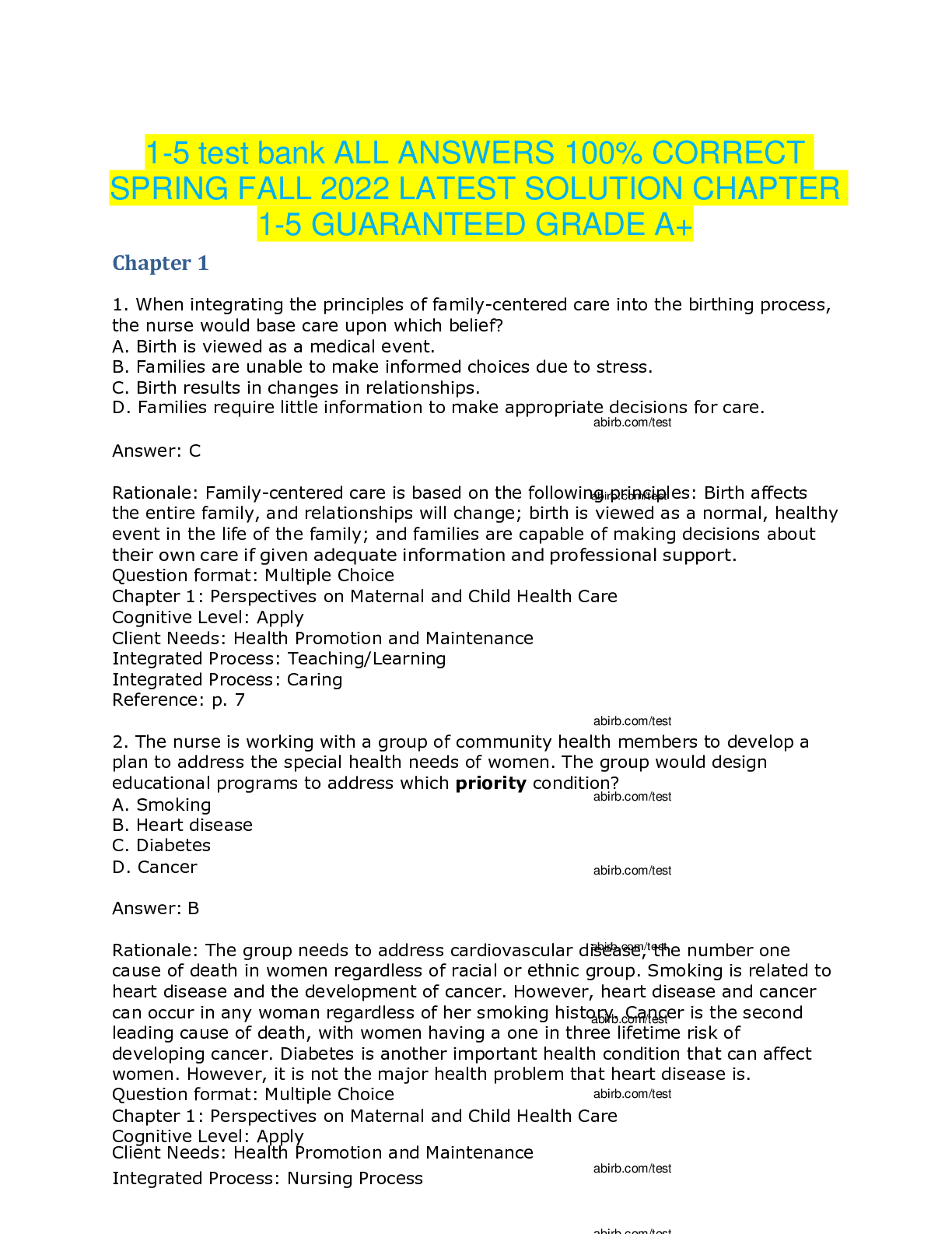

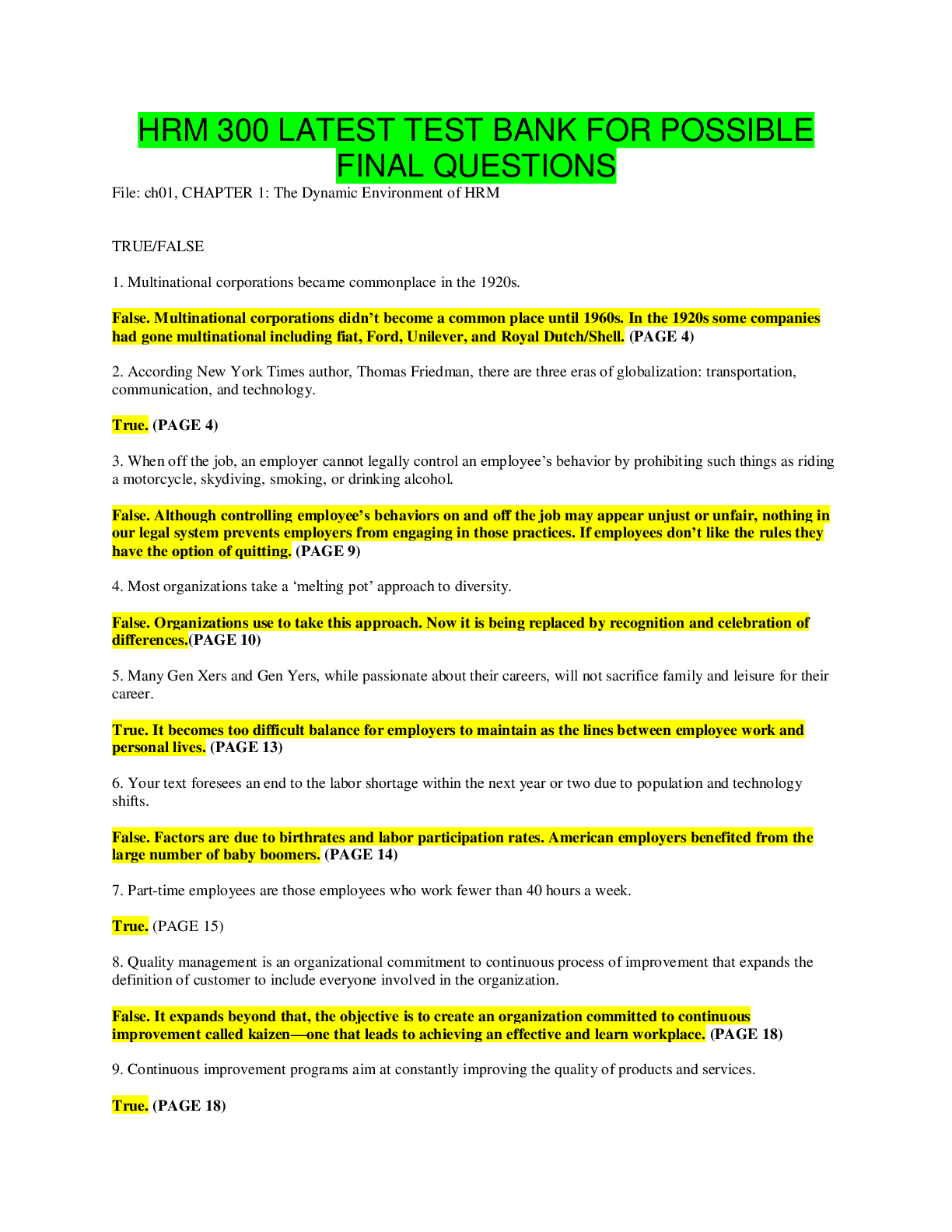
.png)

.png)


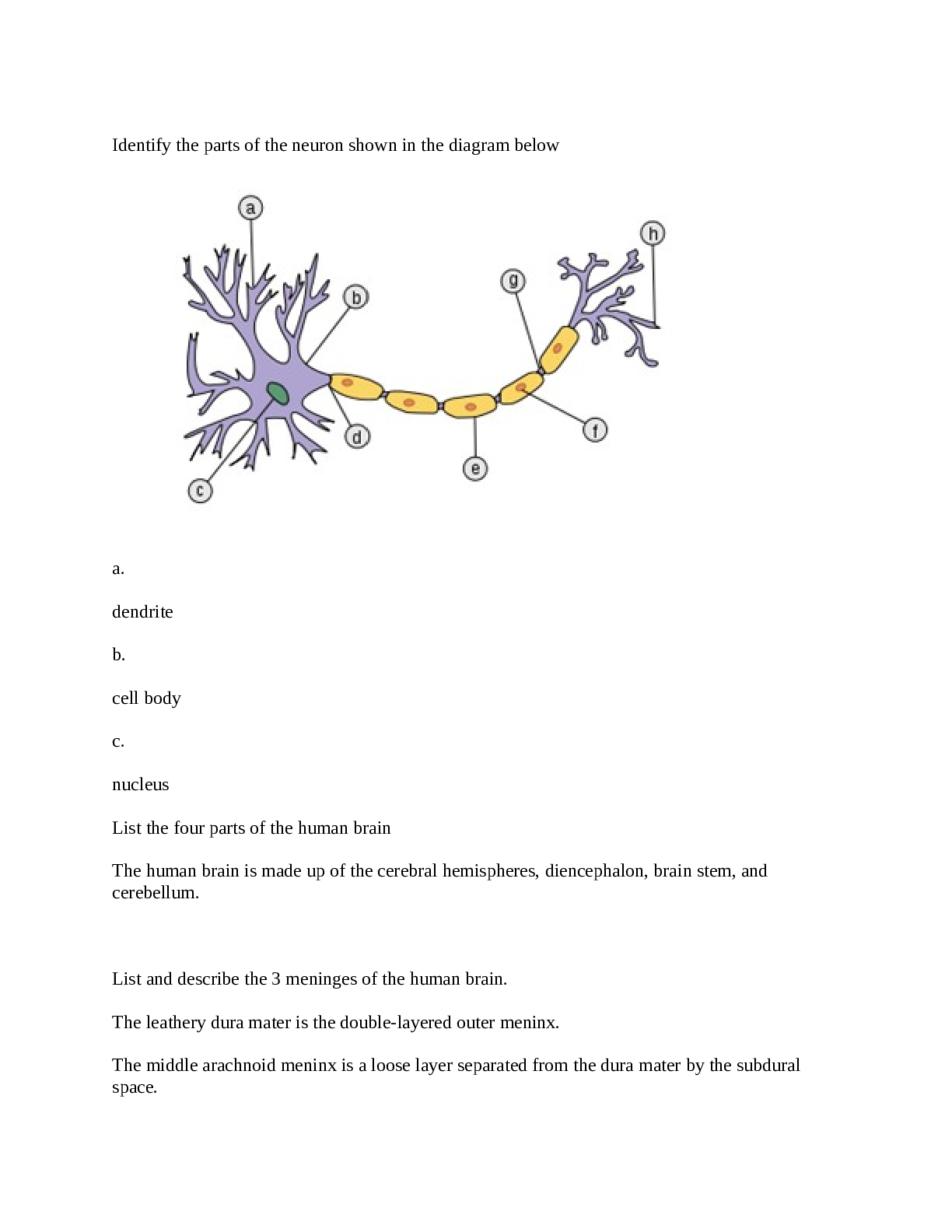

.png)

